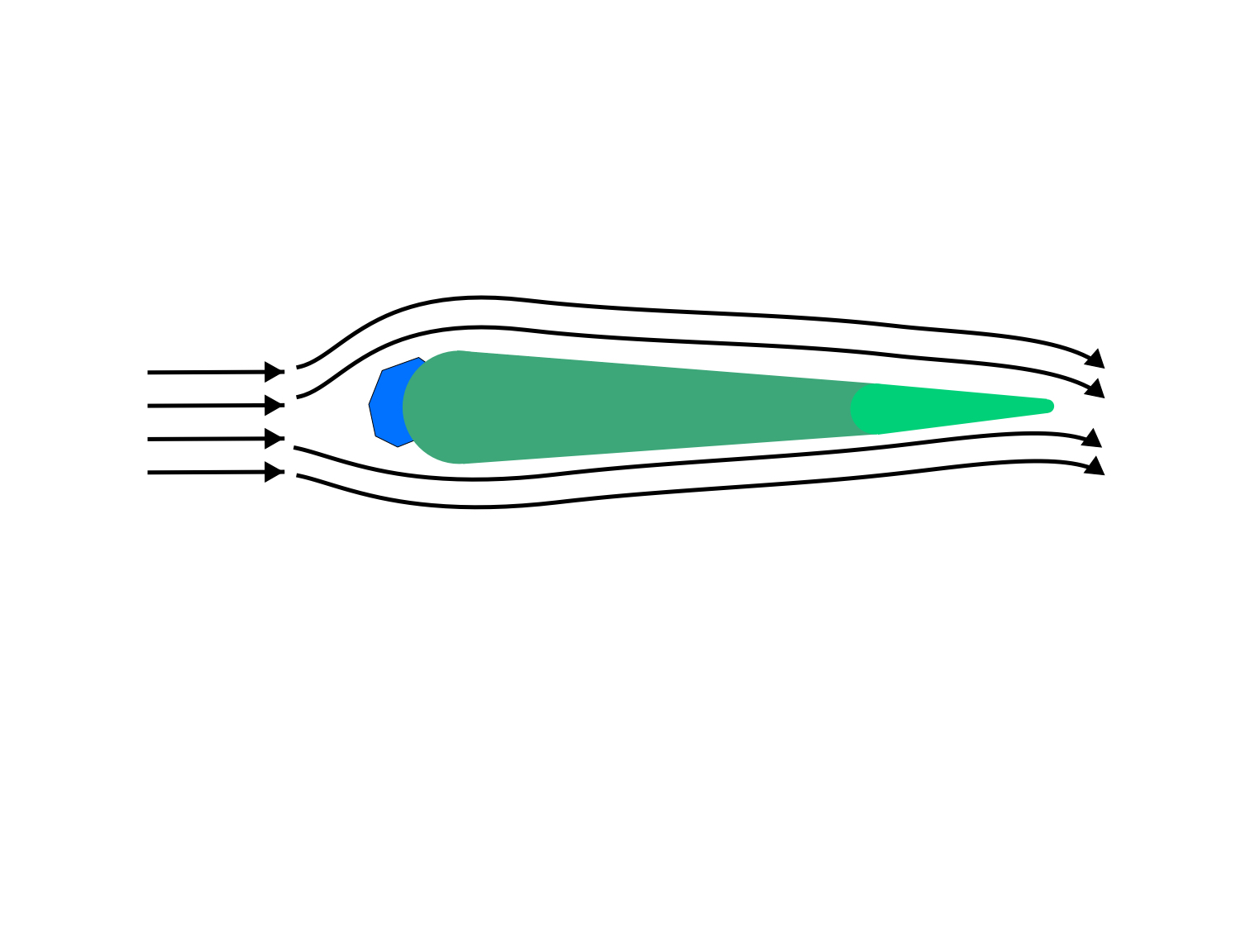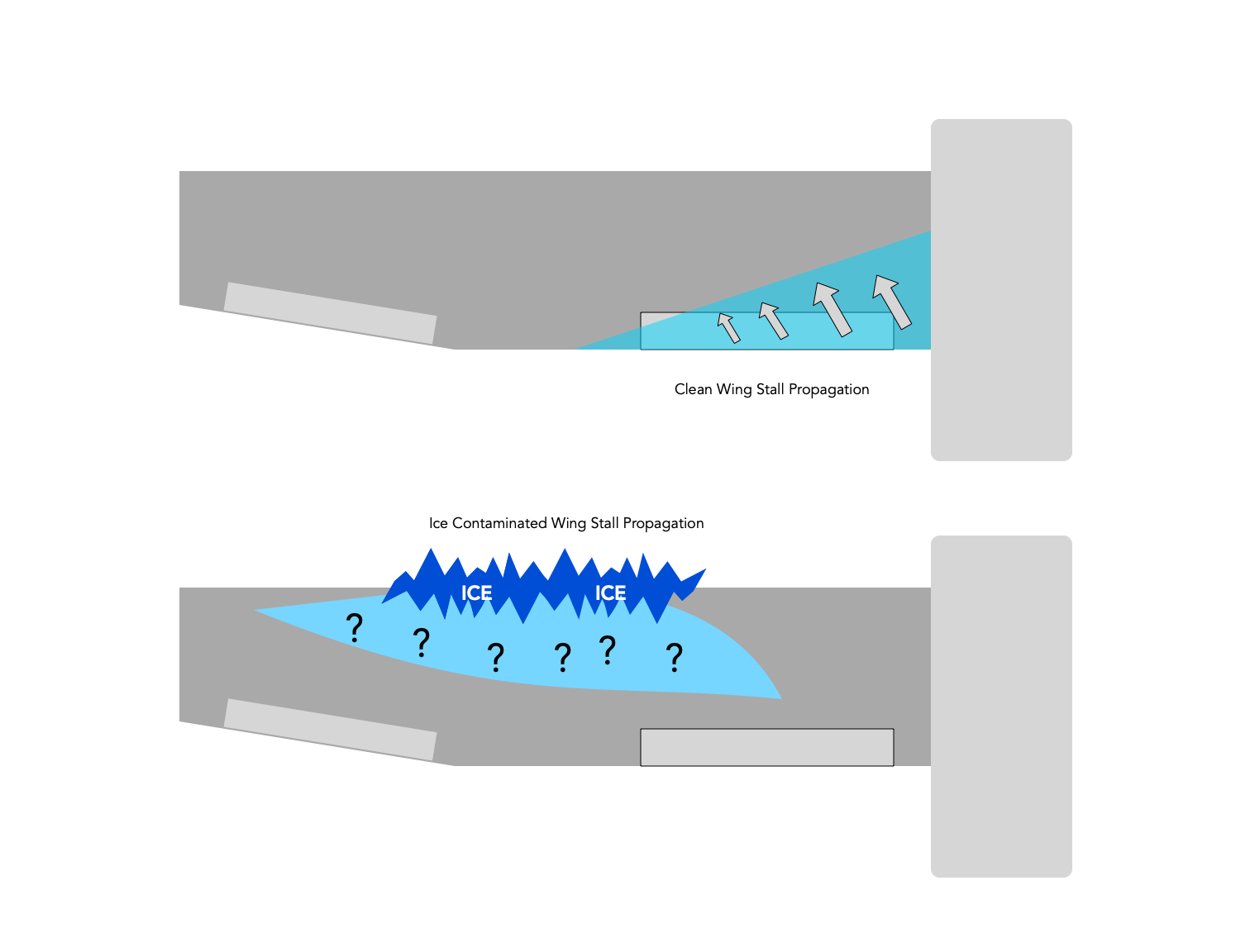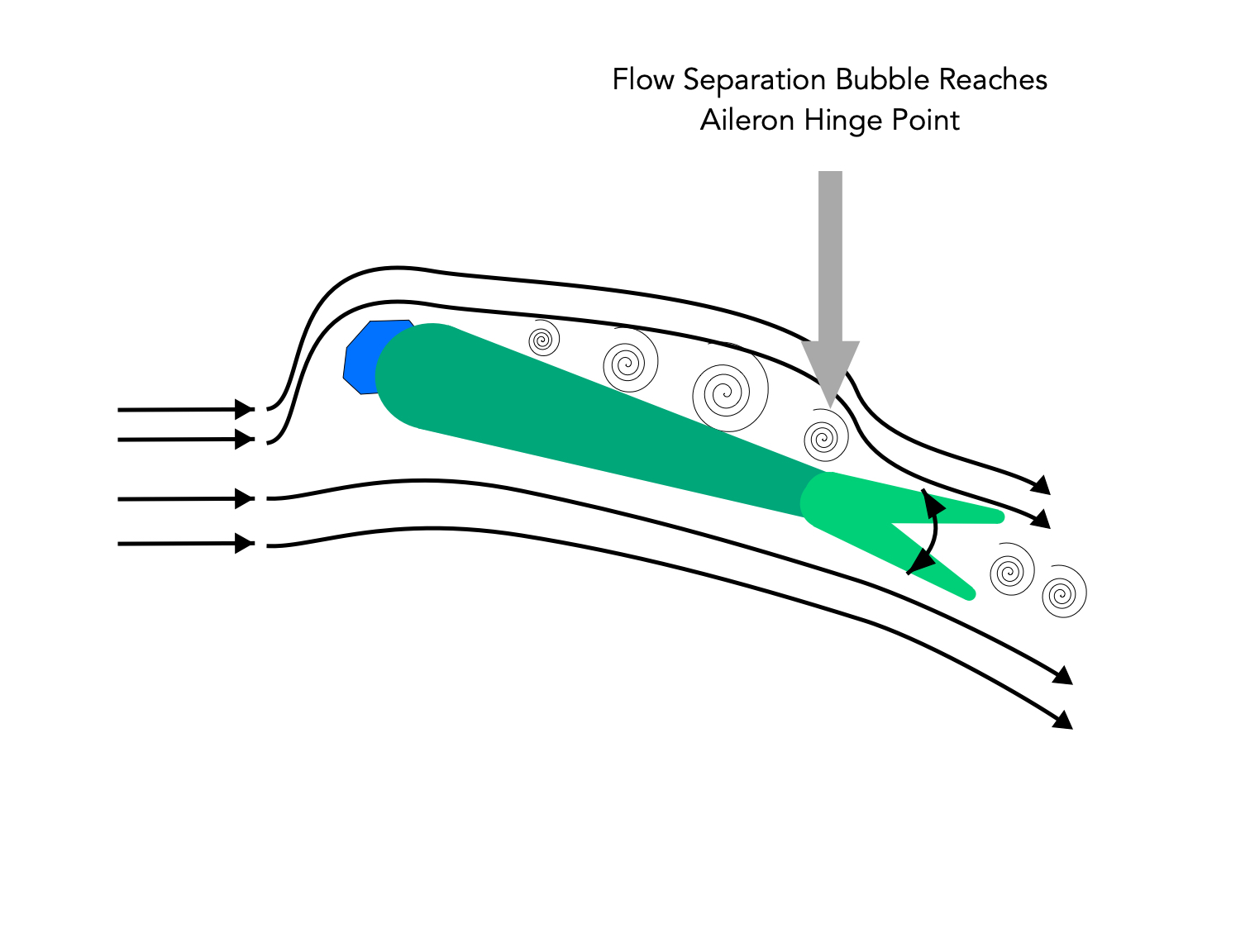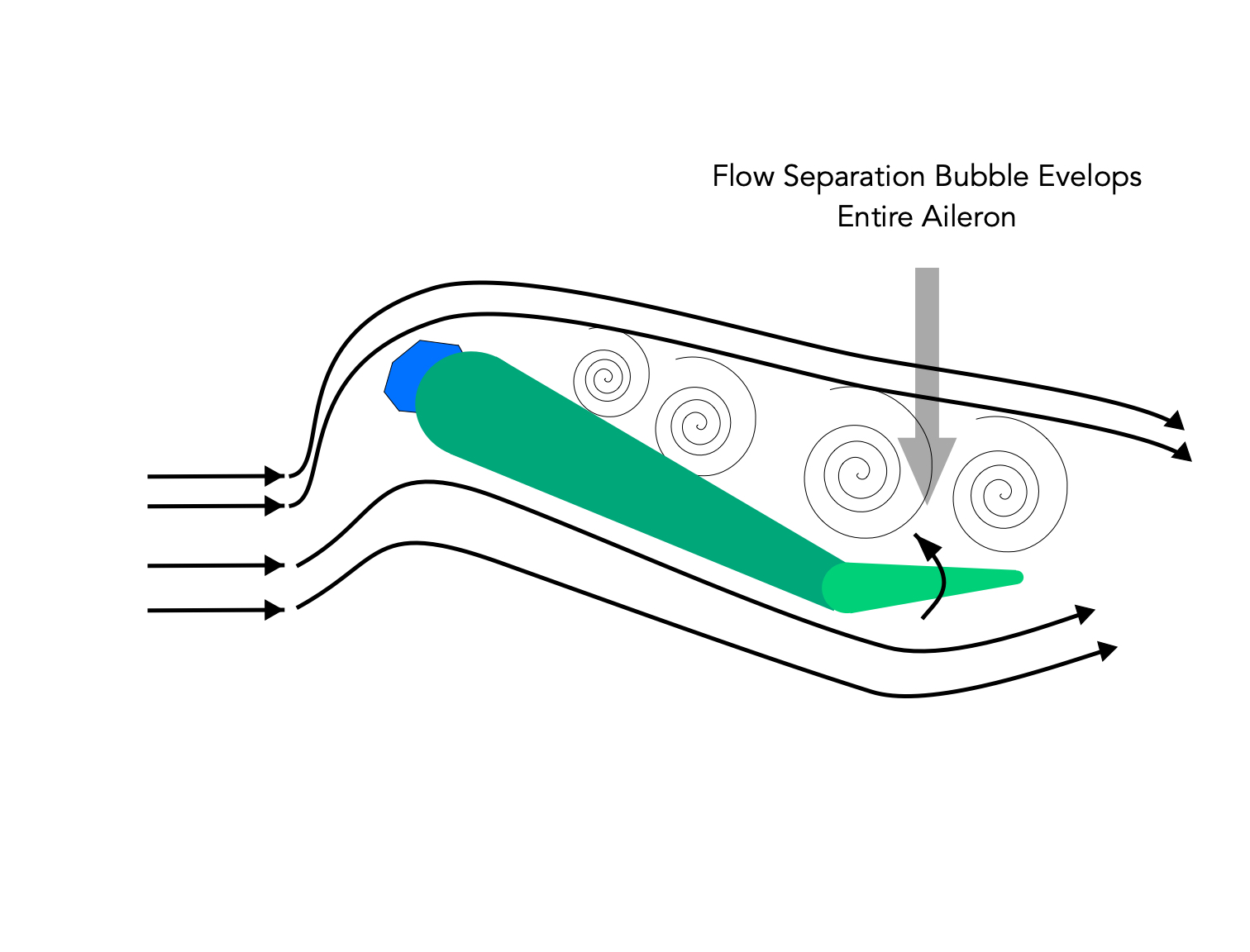icing aerodynamics - wing stall
Ice Contaminated Wing - Low Angle of Attack
At low angles of attack, the airfoil may seem to perform quite normally, despite the presence of ice contamination. This can be very misleading, and can generate false confidence. Indeed, extensive experience with operating at relatively low angles of attack with ice accretion can lead to the normalization of deviance, which is an experience-based tolerance for seemingly minor deviations from standard or defined practice. Such perceptions lead to the idea that "My airplane can carry a lot of ice", and it was certainly the perception of the captain of Northwest 5, when the accident report stated that:
"However, having on previous flights experienced what he considered heavier ice accumulation, he still was not unduly concerned."
He should have been concerned. The aircraft stalled as soon as it was leveled at the minimum descent altitude. The captain was the sole survivor.

Stall Comparison - Profile View
Top - Clean Wing
Bottom - Ice Contaminated Wing

Stall Comparison - Plan View
Top - Clean Wing
Bottom - Ice Contaminated Wing
Bottom - Ice Contaminated Wing

Typical wing design is intended to ensure that the initial flow separation in a stall will initiate at the trailing edge, well inboard of the ailerons. This ensures roll control during a stall recovery.
The ice-contaminated wing stall is different. As the angle of attack is raised, flow separation initiates somewhere aft of the ice shape, depending on the location along the span of the ice shape, and the characteristics of the shape itself. This separation bubble will begin to propagate aft and outward. It can quickly lead to a stall and loss of control.
REDUCE ANGLE OF ATTACK - PUSH THE NOSE DOWN!
The ice-contaminated wing stall is different. As the angle of attack is raised, flow separation initiates somewhere aft of the ice shape, depending on the location along the span of the ice shape, and the characteristics of the shape itself. This separation bubble will begin to propagate aft and outward. It can quickly lead to a stall and loss of control.
REDUCE ANGLE OF ATTACK - PUSH THE NOSE DOWN!
ICING AERODYNAMICS - WING STALL
Ice Contaminated Wing - Stick Force Lightening
As the angle of attack is increased, the separation bubble may propagate aft, until it reaches the hinge area of the aileron. This may result in a much lighter control feel, and possible a buzzing sensation in the aileron control.
REDUCE ANGLE OF ATTACK - PUSH THE NOSE DOWN!


ICING AERODYNAMICS - WING STALL
Ice Contaminated Wing - Aileron Snatch
With a further, very slight, increase in angle of attack, the separation bubble propagates all the way aft, creating a region of very low pressure above the aileron. This pulls the aileron up, resulting in substantial, rapid rolling. Keep in mind that the separation bubble will not be uniform across the wing, unlike the formation of a separation bubble on a clean wing. One aileron will not balance the other.
REDUCE ANGLE OF ATTACK - PUSH THE NOSE DOWN!
